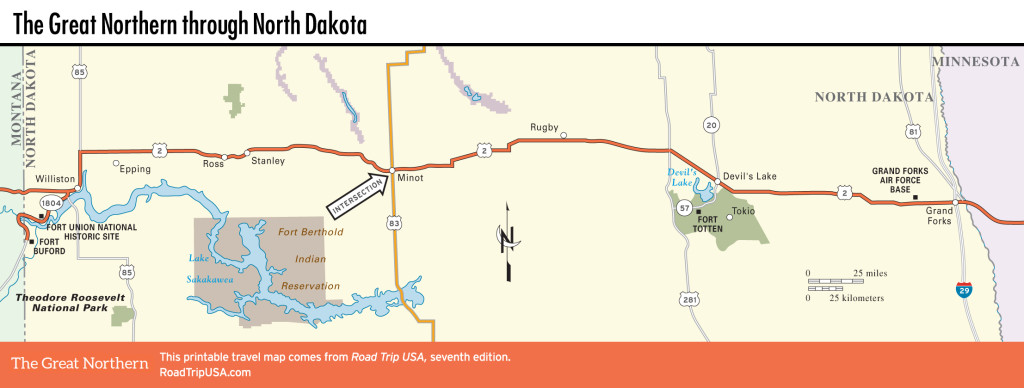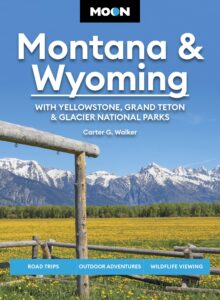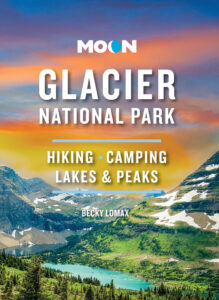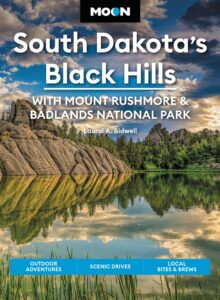Epping to Rugby
Epping: Buffalo Trails Museum
Like many other North Dakota rural communities, the old Great Northern Railway town of Epping (pop. 115) has all but disappeared thanks to automobiles, changes in farming practices, the railroad’s move to diesel instead of steam, and sundry other common complaints. Here, however, the rapidly vanishing Great Plains lifeways have been partially preserved, thanks to the efforts of a local preacher who single-handedly preserved the abandoned buildings and artifacts as the Buffalo Trails Museum (701/859-4361 Tues.-Sun., summer, $5), which has grown to encompass almost the entire town. Main Street is still dusty dirt, lined by a general store, a hardware store, a pool hall, the Sons of Norway Hall, and other essential elements. Most of these old buildings have been converted to house an amazing array of animated dioramas (papier-mâché dummies dressed up like dentists and patients) and the usual old tools and other junk, but it’s a great place to stop.
Ross and Stanley
East of Epping toward Minot, US-2 twists up and through a hundred miles of gentle chocolate-drop hillocks, residuals of great ice-age glaciers, with some beautiful rises and plateaus capped by an occasional abandoned squad of dwellings. Along the way, isolated villages whiz by, full of boarded-up buildings, grain silos, and occasional surprises: Ross (pop. 113), for example, is a typically funky old town with some dilapidated boarded-up buildings and huge grain elevators that look more like spacecraft engines. This unlikely looking place is home to the first mosque built in the USA. Constructed by a Syrian farmer back in 1929, the original mosque was replaced by a newer, nicer temple in 2005, next to a cemetery holding the remains of Ross’s early Muslim settlers.
The one sizable place, Stanley (pop. 2,611), resting along the horizon-straight railroad tracks 8 mi (12.8 km) east of Ross and 55 mi (89 km) west of Minot, is worth a stop to sample the world’s last working Whirl-a-Whip milk shake machine at the old-fashioned soda fountain inside the Dakota Drug Store (107 S. Main St., 701/628-2255), a mile (1.6 km) north of US-2. This pure Americana is much appreciated on a hot summer day.
Rugby: Geographical Center of North America
The landscape along the North Dakota stretch of US-2 consists of immense stretches of hay fields typical of the Great Plains, and only occasional highlights of miniature cattails, goldenrod, and sunflowers. The place-names here are decidedly Anglocentric, with towns named Leeds or York after the hometowns of English investors who, during the 1880s, pumped the fledgling towns full of cash. The general population, however, has always been decidedly Scandinavian.
Midway between Devils Lake and Minot, Rugby (pop. 2,683) is an important agricultural hamlet, known to road wanderers as the town nearest to the geographical center of North America. The exact spot is marked with a two-story stone cairn along the south side of US-2, in front of a café and gift shop (formerly the Conoco station) and across from a Dairy Queen. Nearby is the Prairie Village Museum (daily summer, $8), featuring 20 restored buildings and six exhibit halls—a train depot, a schoolhouse, even a reconstruction of a railroad hobo camp—relocated here from around the county, as well as an exhibit on the life of an over-eight-foot-tall local man, Clifford Thompson.

















